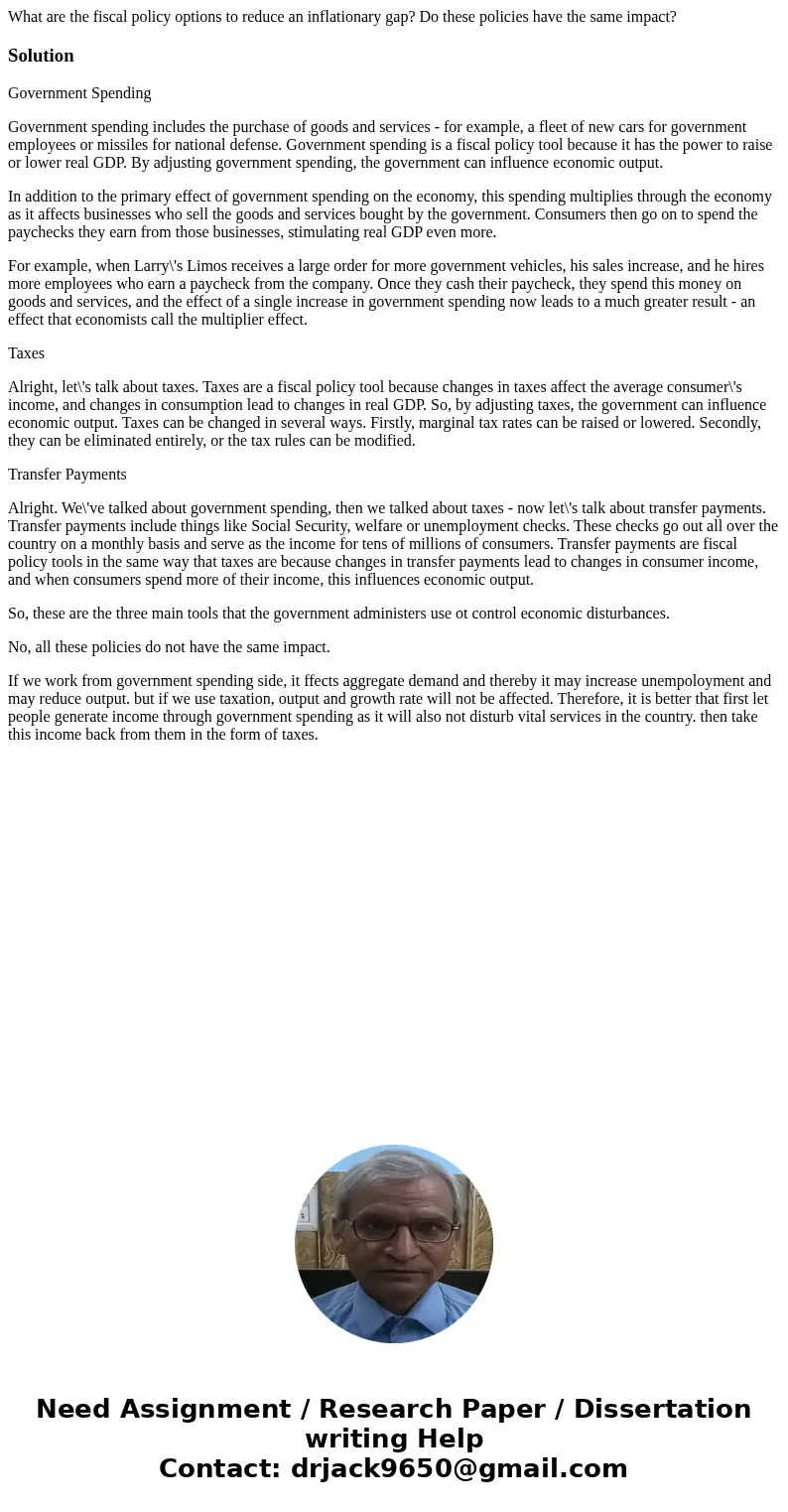What are the fiscal policy options to reduce an inflationary
What are the fiscal policy options to reduce an inflationary gap? Do these policies have the same impact?
Solution
Government Spending
Government spending includes the purchase of goods and services - for example, a fleet of new cars for government employees or missiles for national defense. Government spending is a fiscal policy tool because it has the power to raise or lower real GDP. By adjusting government spending, the government can influence economic output.
In addition to the primary effect of government spending on the economy, this spending multiplies through the economy as it affects businesses who sell the goods and services bought by the government. Consumers then go on to spend the paychecks they earn from those businesses, stimulating real GDP even more.
For example, when Larry\'s Limos receives a large order for more government vehicles, his sales increase, and he hires more employees who earn a paycheck from the company. Once they cash their paycheck, they spend this money on goods and services, and the effect of a single increase in government spending now leads to a much greater result - an effect that economists call the multiplier effect.
Taxes
Alright, let\'s talk about taxes. Taxes are a fiscal policy tool because changes in taxes affect the average consumer\'s income, and changes in consumption lead to changes in real GDP. So, by adjusting taxes, the government can influence economic output. Taxes can be changed in several ways. Firstly, marginal tax rates can be raised or lowered. Secondly, they can be eliminated entirely, or the tax rules can be modified.
Transfer Payments
Alright. We\'ve talked about government spending, then we talked about taxes - now let\'s talk about transfer payments. Transfer payments include things like Social Security, welfare or unemployment checks. These checks go out all over the country on a monthly basis and serve as the income for tens of millions of consumers. Transfer payments are fiscal policy tools in the same way that taxes are because changes in transfer payments lead to changes in consumer income, and when consumers spend more of their income, this influences economic output.
So, these are the three main tools that the government administers use ot control economic disturbances.
No, all these policies do not have the same impact.
If we work from government spending side, it ffects aggregate demand and thereby it may increase unempoloyment and may reduce output. but if we use taxation, output and growth rate will not be affected. Therefore, it is better that first let people generate income through government spending as it will also not disturb vital services in the country. then take this income back from them in the form of taxes.

 Homework Sourse
Homework Sourse